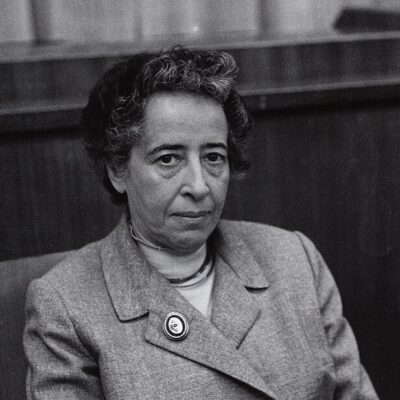The History of the Third Sector in America
 Philanthropy in America: A History, by Oliver Zunz (Princeton University Press: $29.95)
Philanthropy in America: A History, by Oliver Zunz (Princeton University Press: $29.95)
In his book, Philanthropy in America: A History, Oliver Zunz presents a comprehensive history of the development of philanthropy in the United States that delves into the personalities that created the tradition of philanthropy and the “philanthropic sector” in American society. This is no small feat for one volume. He has managed to successfully capture the dynamic quality of voluntary giving and the way it has shaped society’s attitudes toward those in need in the United States and throughout the world.
Zunz, a professor of history at Virginia State University, is the author of four books, and a number of articles. He has also edited a number of volumes focused on the social history of America and volunteerism in America.
In the modern world people with needs, whether for basic support such as food, rent, health care or tuition payments for education, were often viewed by society as responsible for their own individual lot. Although the United States believed very much in the kind of “work ethic” that reinforced the notion that people should be able to work hard and provide for themselves, at the same time a philanthropic ethic developed and citizens were encouraged to both volunteer their time and contribute to organizations assisting those in need. The concept of a civil society working along with the private sector and the public sector was uniquely American. Those with more had a responsibility if not an obligation to enable others to become successful. Zunz traces the origins of philanthropy in American society though to the present century and he discusses the evolution what became the voluntary or third sector. Although found in other countries today this was a unique contribution of America to the world understanding of providing services to those in need through the collection of voluntary contributions of time and money.
Zunz documents how philanthropy grew and matured along with American society. Initially restricted to providing basic assistance and then expanding to broader needs like education and technical training, there were people who did not think advocacy was an appropriate use of philanthropic funds. Over the years as the United States was well into its second century, it was clear to the political leadership that they needed to recognize the importance of advocacy in a democratic society. Thus organizations that were working on behalf of women’s rights or early efforts to change the standing of African Americans through the efforts of the National Association for the Advancement of Colored People were included with the framework of philanthropic efforts and broadening the concept of philanthropy beyond providing basic assistance for food, clothing and shelter.
These developments signaled not only a growth in the amount of money contributed to social causes, but also a simultaneous development both in the professionalization of philanthropy as well as the beginning of the organization of a philanthropic sector that would look out for the needs of both the contributors and the recipient organizations. Questions were placed before politicians about the relationship between the Government, also known as the public sector to this rise in voluntary involvement. Zunz devotes a chapter to the discussion of the Government’s position on the contributor to a charitable organization, as well as its approach to benefits and tax liability to the organization. Over the last hundred years there have been attempts to both regulate the voluntary sector and at the same time to encourage a broadening of the functions of nonprofit organizations and to increase the number of philanthropic contributions and the amounts given. Throughout this period there was an effort to broaden the definition used to define the categories of organizations that would benefit from the tax deductible regulations. An example is the inclusion of religious institutions and advocacy groups within the definition of non-profit organizations.
Zunz sheds light on the historical forces that led to the dynamic development of the nonprofit – or third sector – in American society. It was the outgrowth of the involvement and commitment of a small group of philanthropists who began to raise the issue of how the people and the Government would envision the myriad of organizations and their involvement in various aspects of American life. During the early 1900’s people like Jacob Schiff initiated a process that spanned decades as a “federated” approach to the non-profit organizations evolved out of a combination of the philanthropists’ interest to limit the Government taking control of the newly evolving sector and a need for “advocates” who would protect the interests of the sector and its constituents.
Included in the discussion of philanthropic causes and the providers of services responding to the needs of people is the role of American philanthropy around the world. Examples include the provision of services in foreign countries and the simultaneous effort to encourage the growth and development of independent nonprofit organizations in other countries. In a way this was a natural extension of the sector’s maturation in America and became an additional way of empowering people in their own countries that ultimately led to the spreading of democracy. In this way, the sector provided a somewhat informal diplomatic function in representing the values of the United States around the world.
Reading the book cannot but raise an issue for those of us involved and committed to the development and strengthening of Israeli society. What are the implications of the history of the philanthropic sector’s development in the United States for Israel? There is much Israel can learn from both the experience of the philanthropists and the Government in America.
I have often referred to Zionism in the second 50 years of Israel’s existence as the maturation of civil society and the third sector. As we have either witnessed or read about the somewhat miraculous economic growth of Israel as a “start-up nation,” there has been an unusual growth in the number of Israeli millionaires (and billionaires) and this has given rise to an ever increasing number of voluntary organizations (more than 30,000). More often than not, Israeli philanthropists tend to work independently and support the causes that are meaningful to them in a personal way.
Given the size of the country and the expanding needs as well as the number of people who are capable of providing philanthropic funds, the American experience can be used to assist Israeli society and to prevent the country from floundering in the process of the sophistication of its voluntary sector. There is potential for the politicians to take a page out of the book of the American experience as they are attempting to both regulate the sector and encourage charitable contributions. Israeli philanthropists could learn how to coordinate their efforts to effect changes in the legislation regulating nonprofit organizations as well as how to cooperate more in planning, funding, coordinating and implementing programs that would have a greater impact on Israeli society. Last but not least, Israeli professionals in the third sector could develop an approach to the professionalization of those who work in voluntary organizations based on the experience of the Americans working in the voluntary sector in the United States.
Zunz’s book not only documents the historical development of philanthropy, philanthropists’ involvement, and government’s role in the third sector, but also provides blueprint for what a democratic society experiences when it wants to encourage the growth of a voluntary sector. This book should be read by those who are involved as professionals, volunteers, contributors and politicians both in the United States and foreign countries. There is a great deal to learn from what America has accomplished. Indeed, the study of the history of one country can assist other nations in avoiding similar challenges while at the same time benefiting from the positive experiences in the development of a functioning independent sector for the benefit of all of society.
Stephen G. Donshik, D.S.W., is a lecturer at Hebrew University’s International Nonprofit Management and Leadership Program and has a consulting firm focused on strengthening nonprofit organizations and their leadership for tomorrow. Stephen is a regular contributor to eJewish Philanthropy.

 Add EJP on Google
Add EJP on Google









